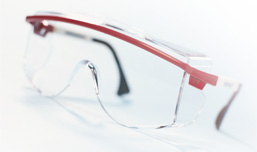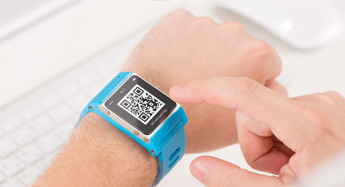The wearable technology revolution: Is your workplace prepared?
With the exponential rise of smart devices in recent years, the powerful combination of computing technology and internet connectivity has moved from our offices and homes to our bags and pockets.
Now, experts are predicting that devices that can be worn on the body, or even inside the body, will be the next major step in this trend towards more pervasive or even 'ubiquitous' computing – the idea that computing technology and the internet will be accessible anywhere as an integrated part of our environment.
 These new devices hark back to the calculator wristwatches of the 1980s and are akin to Bluetooth mobile or audio headsets but are usually defined by their greater functionality and internet connectivity. They often operate in partnership with a smartphone which acts as the internet hub for the device and powers related apps although this may change as new, more sophisticated, devices emerge.
These new devices hark back to the calculator wristwatches of the 1980s and are akin to Bluetooth mobile or audio headsets but are usually defined by their greater functionality and internet connectivity. They often operate in partnership with a smartphone which acts as the internet hub for the device and powers related apps although this may change as new, more sophisticated, devices emerge.
You may have come across wearable technology in the form of fitness and health monitoring devices, such as Fitbit, Nike+ and Jawbone UP which can track the wearer's activity and movement and have been available for some time. You may have read about Google Glass in the news: these smart glasses, which can take videos or photos and project information from the internet into the right eye of the wearer via a tiny display, have generated a huge amount of buzz amongst developers, tech enthusiasts and related media. Other subcategories of wearable technology include smart watches, wearable cameras, video glasses, people-tracking devices and smart clothing.
The advent of this technology is creating various issues which your business will need to address proactively. While wearable technology is still at an 'early adopter' stage, 2014 will no doubt see many more tech savvy employees bringing personal wearable technology into work for a host of reasons, including improving productivity and ubiquitous connectivity, particularly after the general release of Google Glass later this year. This BYOWD (Bring Your Own Wearable Device) trend represents the next wave of the general BYOD trend, which began with smartphones and tablets, and will present a number of new challenges for employers considering whether to permit or support BYOWD.
By their very design, Smart glasses and wearable cameras are capable of capturing a great deal of images, video and audio in the work environment, potentially in a surreptitious way. The wearer then has the ability to upload the content to the technology vendor's servers and, potentially, to share that data with anyone via the internet (e.g. via email or social media).
 With the introduction of smart glasses and wearable cameras into the office, businesses will therefore need to grapple with the risk of data leakage and the unauthorised capture of confidential information.
With the introduction of smart glasses and wearable cameras into the office, businesses will therefore need to grapple with the risk of data leakage and the unauthorised capture of confidential information.
The confidential data of a business is one of its most valuable assets. This confidential data may include key client information, critical financial information or important trade secrets. Businesses need to consider the risk of employees covertly copying crucial sensitive information via wearable technology and later downloading this information onto a "cloud data centre", onto their own personal desktop or even passing this information directly to a competitor.
In order to mitigate the risks arising from wearable technology in the workplace, HR teams will need to consider the following key tips:
- reviewing and updating employment contracts and any applicable corresponding social media or disciplinary policy to expressly prohibit the acquisition and disclosure of confidential information through wearable technology;
- reminding the workforce of their duties of confidentiality;
- ensuring that any monitoring of communications policy covers any wearable technology which cannot be considered to be a personal device of the employee; and
- updating dress code policies to prohibit / limit employees from using wearable technology in the workplace.
If you have any questions on this article please contact us.



